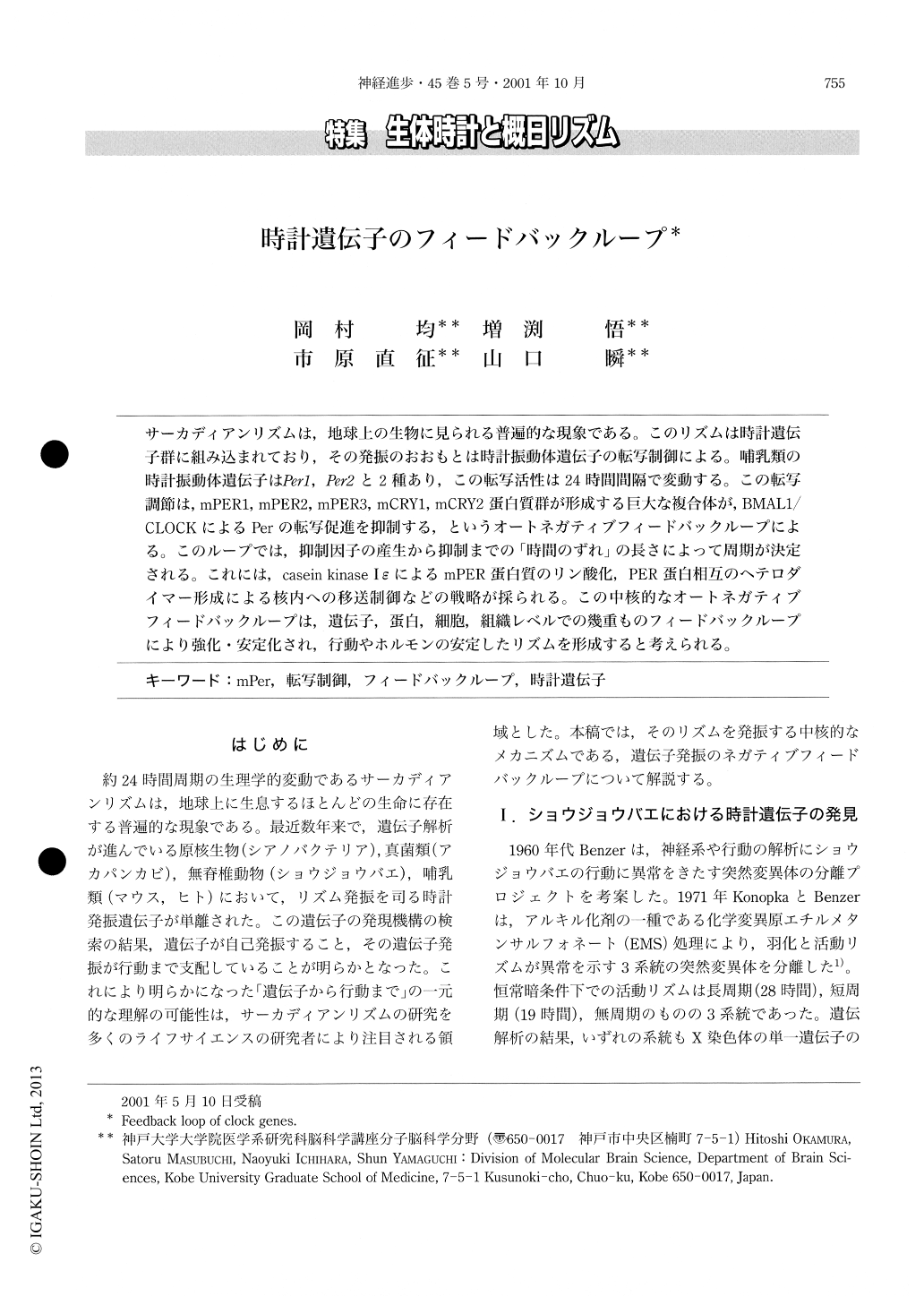Japanese
English
- 有料閲覧
- Abstract 文献概要
- 1ページ目 Look Inside
サーカディアンリズムは,地球上の生物に見られる普遍的な現象である。このリズムは時計遺伝子群に組み込まれており,その発振のおおもとは時計振動体遺伝子の転写制御による。哺乳類の時計振動体遺伝子はRer1,Rer2と2種あり,この転写活性は24時間間隔で変動する。この転写調節は,mPER1,mPER2,mPER3,mCRY1,mCRY2蛋白質群が形成する巨大な複合体が,BMAL1/CLOCKによるPerの転写促進を抑制する,というオートネガティブフィードバックループによる。このループでは,抑制因子の産生から抑制までの「時間のずれ」の長さによって周期が決定される。これには,casein kinase IεによるmPER蛋白質のリン酸化,PER蛋白相互のヘテロダイマー形成による核内への移送制御などの戦略が採られる。この中核的なオートネガティブフィードバックループは,遺伝子,蛋白,細胞,組織レベルでの幾重ものフィードバックループにより強化・安定化され,行動やホルモンの安定したリズムを形成すると考えられる。
Transcription- (post) translation feedback loop of a set of clock genes generate circadian oscillation in many organisms. Recently, it was elucidated an accessory transcription loop helping the oscillation of the core clock feed-back loop. Cyclic expression of PAR proteins activates the promoter of a clock oscillating gene, mPer1, by directly binding to the mPer1 promoter. PAR protein and CLOCK-BMAL1 cooperatively activated the mPer1 promoter. E4BP4 negatively regulates mPer1 transcription by the competence to the same binding site of PAR proteins loop. The core and accessory loop may also be useful for transmitting time of core oscillator to clock controlled genes.

Copyright © 2001, Igaku-Shoin Ltd. All rights reserved.


